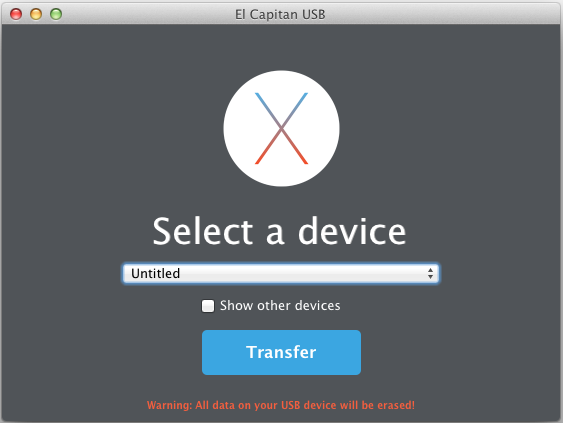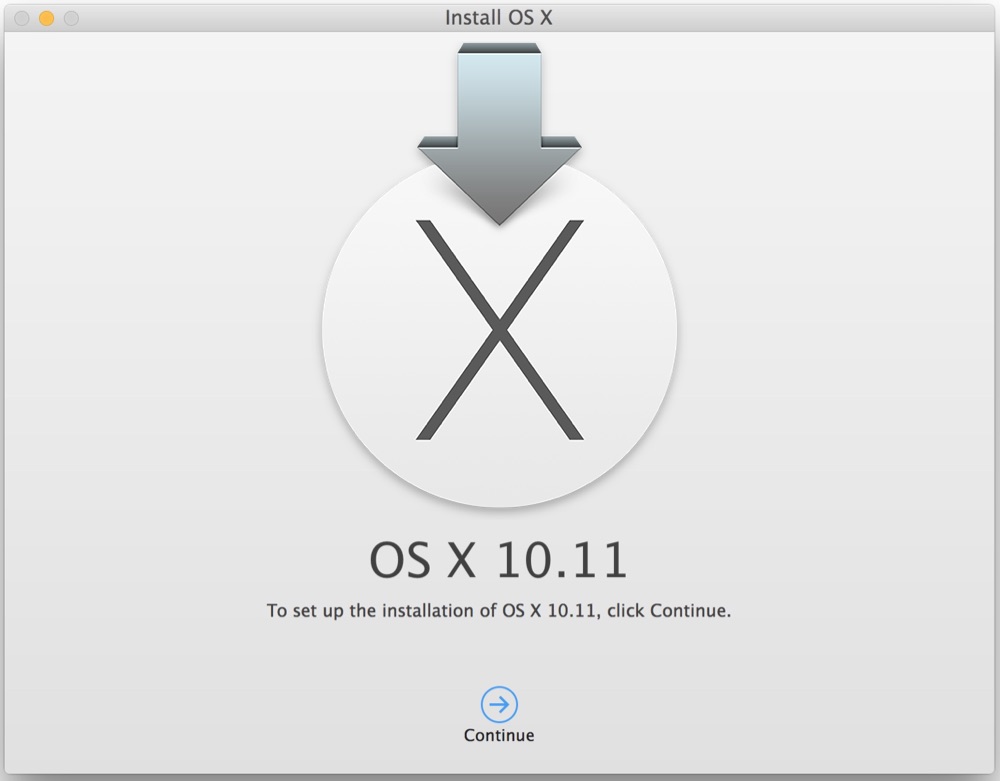Download Os X El Capitan Installer
- The OS X 10.11 El Capitan installer from the Mac App Store in your Applications folder. The installer will delete itself when you install the operating system, but it can be re-downloaded if.
- The installer you create can be used to install OS X El Capitan 10.11 on any eligible Mac computer. This is a more convent and less time consuming way to install OS X El Capitan on multiple machines, gives you a handy emergency disk, and enables a fresh OS X install.
OS X El Capitan Installer. Official OS X El Capitan Installer from the Mac App Store. Un-archive the zip archive and you will get the app Installer. A bootable ISO or bootable USB can be made from this installer. Instructions on how to do that are on the Internet/Youtube.
Reinstall cleanmymac x. How to install, to x on os capitan, installer os x el capitan sur pc (hackintosh), how to install osx 10.11 el capitan on a pc. If you're interested in running Mac OS X, but you don't want to pay ridiculous prices for a normal Mac, then a Hackintosh just might be fo.
Os X El Capitan Installer

This is Ultimate tutorial for installing Mac OSX up to EL Capitan 10.11.
You don't need working mac installation or AHCI capable motherboard, it can be done on any PC.
Tools that you need:
OSF Mount - http://www.osforensics.com/tools/mount-disk-images.html - This is most important tool, it can mount efi partition on image and edit it.
image link: https://goo.gl/nMcpOG
win 32 disk imager - http://win32-disk-imager.en.uptodown.com/ - this will be used to write image to USB, you can also use other software, there are many of them, i use this one.
In case you did not listen to me and you want to do this harder way:
http://www.hackintosh.zone/file/828-bootdiskutility-v212015/ - utility that can install clover from windows.
https://sourceforge.net/projects/cloverefiboot/files/Installer/ - Clover installer package
The most important note!!! ---- You need Sata kext in 10.11 folder, that will make your HDD to show up in disk manager, without it you will get still waiting for root device and your HDD wont show up in disk utility and you wont be able to install EL Capitan on your HDD.
My Specs :
Processor - e7200 core2duo
Ram - 6gb - different modules with different speed and latency
HDD - 320+720gb - sata2
USB - 16gb Kingstone
GPU - HD 7850 2gb dual bios.
Motherboard - P5N-D - https://www.asus.com/Motherboards/P5ND/
It was 2009 when Apple last released a new operating system on physical media. Things have proceeded remarkably smoothly since version 10.7 switched to download-only installers, but there are still good reasons to want an old, reliable USB stick. For instance, if you find yourself doing multiple installs, a USB drive may be faster than multiple downloads (especially if you use a USB 3.0 drive). Or maybe you need a recovery disk for older Macs that don't support the Internet Recovery feature. Whatever the reason, you're in luck, because it's not hard to make one.
As with last year, there are two ways to get it done. There's the super easy way with the graphical user interface and the only slightly less easy way that requires some light Terminal use. Here's what you need to get started.
Os X El Capitan 10.11.6 Download Usb
- A Mac that you have administrator access to, duh. We've created El Capitan USB stick from both Yosemite and El Capitan, but your experience with other versions may vary.
- An 8GB or larger USB flash drive or an 8GB or larger partition on some other kind of external drive. For newer Macs, use a USB 3.0 drive—it makes things significantly faster.
- The OS X 10.11 El Capitan installer from the Mac App Store in your Applications folder. The installer will delete itself when you install the operating system, but it can be re-downloaded if necessary.
- If you want a GUI, you need the latest version of Diskmaker X app. Version 5 is the one with official El Capitan support.
- Diskmaker X is free to download, but the creator accepts donations if you want to support his efforts.

The easy way
Once you've obtained all of the necessary materials, connect the USB drive to your Mac and run the Diskmaker X app. The app will offer to make installers for OS X 10.9, 10.10, and 10.11, and it should run on OS X versions all the way back to 10.7—support for 10.6 was dropped in the most recent release.
AdvertisementDiskmaker X has actually been around since the days of OS X 10.7 (it was previously known as Lion Diskmaker), and it's still the easiest GUI-based way to go without intimidating newbies. If you're comfortable with the command line, it's still possible to create a disk manually using a Terminal command, which we'll cover momentarily.
Select OS X 10.11 in Diskmaker X, and the app should automatically find the copy you've downloaded to your Applications folder. It will then ask you where you want to copy the files—click 'An 8GB USB thumb drive' if you have a single drive to use or 'Another kind of disk' to use a partition on a larger drive or some other kind of external drive. Choose your disk (or partition) from the list that appears, verify that you'd like to have the disk (or partition) erased, and then wait for the files to copy over. The process is outlined in screenshots above.
The only slightly less-easy way
If you don't want to use Diskmaker X, Apple has actually included a terminal command that can create an install disk for you. Assuming that you have the OS X El Capitan installer in your Applications folder and you have a Mac OS X Extended (Journaled)-formatted USB drive named 'Untitled' mounted on the system, you can create an El Capitan install drive by typing the following command into the Terminal.
sudo /Applications/Install OS X El Capitan.app/Contents/Resources/createinstallmedia --volume /Volumes/Untitled --applicationpath /Applications/Install OS X El Capitan.app --nointeraction
Os X El Capitan Update
The command will erase the disk and copy the install files over. Give it some time, and your volume will soon be loaded up with not just the OS X installer but also an external recovery partition that may come in handy if your hard drive dies and you're away from an Internet connection.
Os X Yosemite
Whichever method you use, you should be able to boot from your new USB drive either by changing the default Startup Disk in System Preferences or by holding down the Option key at boot and selecting the drive. Once booted, you'll be able to install or upgrade El Capitan as you normally would.